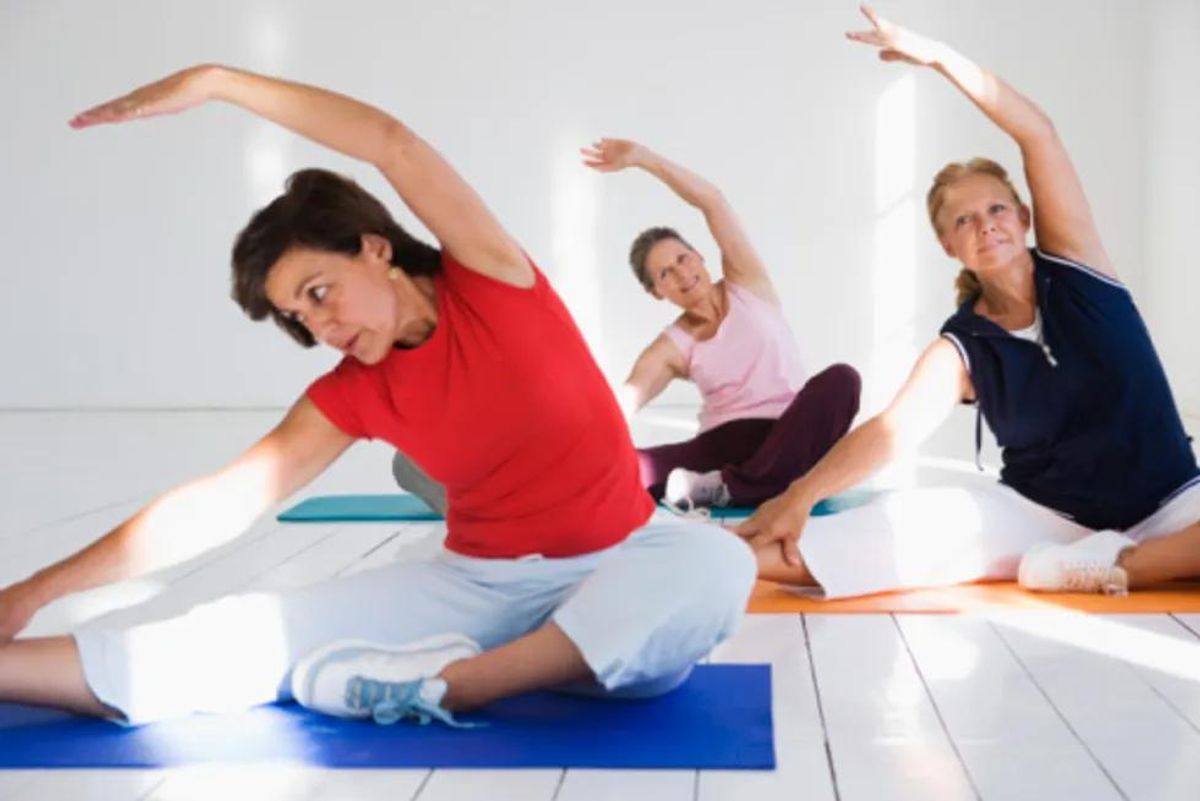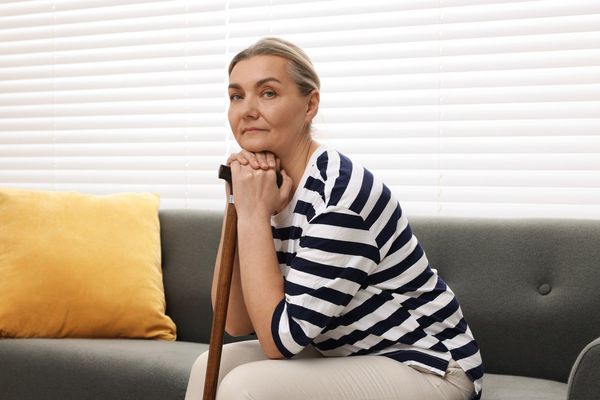If you notice your joints creaking a little and not moving as smoothly as they once did, you may want to talk to your health care provider about osteoarthritis (OA). As you age, cartilage—the shock-absorbing tissue that cushions our joints—can start to break down over time, causing increased stress on the bones, muscles and joint tissue. This can lead to pain, swelling, stiffness and difficulty with joint movement. Osteoarthritis is not just normal wear and tear, but an active biologic process that breaks down the cartilage in response to stress on the joint.
Exercise, weight management, medications and other therapies all can help relieve the joint pain caused by osteoarthritis.
According to the Arthritis Foundation, about 27 million Americans have osteoarthritis. It most often strikes joints in the knee, elbows, fingers (especially the joints closest to the nail and in the thumbs), lower back, neck, hip, ankle and big toe.
You're more likely to develop OA if you:
- Are middle-aged or older
- Have a family member with OA
- Suffered a previous serious joint injury or infection
- Are overweight
- Regularly overuse a joint (women with jobs that involve repetitive knee bending are more likely to develop osteoarthritis of the knee, for example)
Interestingly, before age 45, more men have OA than women; after age 45, more women have the condition.
The good news is that OA is treatable, in many cases by exercise and a healthy diet—things we should be doing anyway for optimum health. Treatment usually involves a combination of therapies.
Signs and Symptoms of Osteoarthritis
Most people don't wake up one day and suddenly have symptoms of OA. Instead, the signs usually come on more gradually. At first, you may start to notice that your joints such as your knees feel stiff when you get out of bed in the morning or after you sit for a long time. You may have trouble opening jars or fastening buttons because your fingers are swollen. Or you may notice your elbow doesn't move as smoothly through your backhand in tennis. This soreness and stiffness may later become pain that gets more persistent or worse as the day goes on. Joints may swell or produce a crunching sensation when you move.
Osteoarthritis may progress differently in different people. In most cases, it develops slowly over time, but it can worsen rapidly in severe cases. It can also remain stable for many years without progression. In some people, OA is merely a mild inconvenience; in others, it causes extreme pain and disability. Interestingly, X-rays can show joint damage but cannot predict pain or disability. In more serious cases, the disease may take a toll on a person's lifestyle, restricting daily activities and causing job limitations, which may lead to feelings of depression and anxiety.
Treating Osteoarthritis: Keep Your Joints in Motion
If you suspect you have osteoarthritis, it's important to talk with your health care professional about your symptoms. If you are diagnosed with OA, it's important to explore the full range of treatment options. It's also important for you to actively participate in your own care. People who do so report less pain and fewer visits to their doctors' offices.
If your partner complains of OA symptoms, encourage him or her to seek medical attention as well. Men often are reluctant to see a health care professional, even though they may complain to those around them. If you recognize the signs of OA, you may provide the nudge he or she needs to seek help.
There's no reason anyone with OA symptoms should hesitate. While there is no cure for OA, there are numerous effective options to help manage the symptoms associated with the disease.
Management options for OA include the following:
- Maintaining a healthy weight. Losing just one pound of body weight takes four pounds of pressure off your knee joints, so weight loss benefits quickly add up. Plus, inflammatory chemicals made by fatty tissue may be part of the cause of osteoarthritis. As a bonus, losing weight helps reduce your risk of other health problems, such as heart disease, diabetes and cancer. It also boosts energy, mood and self-esteem. The best way to shed pounds is by balancing healthy eating habits with regular exercise. You don't have to get to a normal weight to see improvement. Many studies have shown that even a modest weight loss, such as a 10 percent reduction in body weight, is associated with significant health benefits.
- Exercising regularly. Contrary to conventional wisdom, using a joint with arthritis may not lead to more damage. In fact, the opposite may be true.Not only does regular exercise help you maintain a healthy weight, it builds muscle, and strong muscles can protect your joints. Exercise also improves mood, increases flexibility, stimulates blood flow and reduces pain. For all these reasons, studies show that people with OA who exercise consistently have better joint function and less pain than people who are sedentary. To maximize joint health, participate in a variety of exercise types, including strength training, aerobic conditioning, balance, agility and stretching. Consider activities you enjoy that combine these elements, such as dancing, water aerobics or hiking. Visit Making Your Move to learn some simple OA-friendly dance routines to help you get started. Consistent exercise is good for joints, even though it may cause some occasional muscle or joint pain. If you have pain that lasts more than a couple hours, reduce the intensity of your workout or take a day off. Talk to your health care professional or physical therapist about which activities are best for you.
- Talking to your doctor about medications that ease pain. Medications can help relieve pain and improve functioning, which may then make it easier to exercise and lose weight. Pain-relieving medications for OA include over-the-counter and prescription pain relievers, anti-inflammatories in oral or topical formulations, as well as injections to the affected joints. Topical pain-relieving sprays, creams and rubs may also provide relief. Because all medications have potential side effects and interactions, be sure and talk with your health care provider about what medications may be best for you based on your health history.
- Trying non-medication options. Several non-drug treatments have been shown to help manage OA. These include physical and occupational therapy, certain vitamins and supplements,heat and cold therapy, acupuncture, massage and transcutaneous electrical nerve stimulation (TENS).
- Resting when needed. No busy woman will argue with this treatment: When OA makes your joints particularly sore, you may find that resting, getting adequate sleep, reducing stress and practicing relaxation techniques can help ease the pain. Avoid the tendency to overdo. A steady pace with minor adjustments works best.
- For severe cases, exploring surgical options. If you have severe OA that hasn't responded to other therapies, your doctor may suggest surgery to maintain your ability to remain active. There are several surgeries for OA, with joint replacement being the most common. Some research shows that arthroscopic surgery is rarely helpful in treating OA, so it is not often recommended.
As women, many of us are natural planners, which can come in handy for managing OA. Although there's nothing you can do to completely prevent OA, you can take measures now, such as exercise and weight loss, to protect your joints so you can enjoy a happy, healthy and physically active life down the road.







